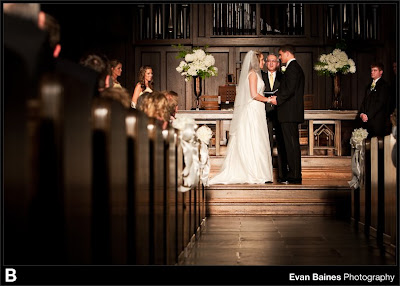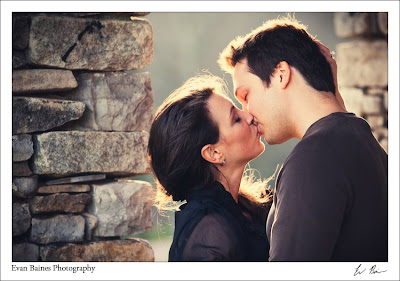 Eddie Adams, AP Photo
Eddie Adams, AP PhotoHi, everyone: Amanda Baines here. Evan asked that I “guest blog” for Part II of his coverage of “
An Unlikely Weapon: The Eddie Adams Story” to get an alternate perspective. The layman’s terms of it, perhaps? I said, “Fine. Cheeseburger first, then blogging.” So, after a lovely nosh of cheeseburger and fries at Five Guys, here I am.
I came to this film out of a desire to find something over which Evan and I could bond. I’m really into highbrow stuff (grammar jokes, esoteric subtitled films, etc.) and Evan is, of course, a photographer’s photographer...a student of the world of it who can’t get enough of it. He’s tried to teach me things and I’ve learned a little. Trouble is, my head is already so full of other technical information that I don’t know what to do with F-Stops and ISO’s and what have you.
When I shoot, which is rare (I’m a ham, what can I say? I prefer to be the focus of the picture, not the one focusing), I usually bring along a Holga. Point, Shoot, Pray: that’s a good enough MO for me. Leave the real photography to the professional in the family.
Anyway, I heard that this film was playing and got really excited. A few months back, Evan and I had attended a photography exhibition at the Frist Center here in Nashville, where we’d seen some of Eddie Adams’ prints, in person. I remember being instantly familiar with the shot when I saw it in person. I remember thinking to myself how horrible it was...and how lucky. Not lucky for Eddie in the sense that it granted him any wishes or fulfilled any dreams, and certainly it was bad luck for the shooter and victim in many ways afterwards, but lucky in a timing sense.
Working with Evan and other photographers, I’ve learned that timing is absolutely vital to all that they do. Understanding this, how purely lucky it is that the photo even exists. How many factors had to have merged to allow that shot to be captured at all.
In the film we meet Eddie as an older man, gruff, funny, and a bit of a rascal. I liked him immediately, much like most people who met him probably did. He seemed to have a affable sense of humor, an approachable vibe, and a self-deprecating manner that resulted in true honesty, made you want to know him, made you want him to want to know you, too, in a way.
Eddie Adams is best known for his combat photography, specifically during Vietnam. While there, Adams was placing himself in harm’s way along with the Soldiers, going on runs with them in helicopters, through the jungles of Vietnam. He knew, having been a soldier himself once, that this was the only way to win their respect.
He saw six friends die in the war, all photojournalists. After a particularly unfortunate incident (four photographers he knew were killed in a single helicopter crash) he called the president of the AP and asked to be sent home. He had already been in country for perhaps years by that time, photographing the day to day monotony and weariness of the Soldiers and citizens along with the drama and agony of the war. It was too much: he was spent. But when he got back home to New York City, he couldn’t relate to anyone who hadn’t experienced what he had. He felt detached, annoyed that no one seemed to care that there were people dying in Vietnam. He realized he had to go back the day he saw a disabled Vet on crutches nearly run down by a New York City cab. He called the president of the AP and asked to be sent back again.
The shot Eddie Adams became so famous for, the Shot That Turned The Tide In Vietnam, as it was dubbed by some interviewees in the film, was taken during this second tour. Things in Vietnam had gone from really bad to a lot worse since he’d been away. When that shot was taken, it was during of a Vietcong raid on Saigon where the US Embassy had been nearly destroyed and thousands Vietnamese citizens and US Troops alike dead or injured. On day two of the attacks, during the cleanup, Eddie Adams explained that he saw someone shackled: a prisoner, and saw more people with guns moving him down a street. As a photographer, his instinct was to follow, to see what happened, expecting to see the Soldiers cart him off to a paddy wagon and away.
Instead, the General simply stood the Vietcong up in the street and shot him, minimal fanfare, minimal fuss. The accompanying video footage, interspersed with the three photos Eddie Adams took, was very graphic, a “water fountain” of blood issuing from the wound in the grainy color film. Strangely, I was less shocked by the footage than I was by the photos. The footage was taken at the exact same time as the photographs and yet, it was somehow too surreal for me to grasp, to follow. The director, Susan Morgan Cooper, said later in the Q&A that for her, photographs are something that we can stare at, can be made to live with.
Eddie Adams had to live with it, too. When he finally left Vietnam, the photograph was everywhere, haunting him. He barely seemed to want anything to do with it. Later in the movie, he commented in his self-deprecating way that, “It’s not even a good photograph. For one thing, it’s the wrong time of day...composition is awful...”
He would go on to cover nearly a dozen wars and through all of them, the press began to look to him to “take the one shot,” the shot that would serve as the touchstone for the conflict, encapsulating it and representing it to the rest of the world.
The thing that struck me so much about him, beyond the comments about how “everyone is...we’re all dying, so what does it matter what you do?” was that he really wanted to understand his subjects. He wanted to understand and empathize with the General in the photo he took, seeming to understand on some level that he was doing what he had to do. Later, he wanted to understand Fidel Castro (after he bossed him around a little bit), trying to put him into a situation where he was Fidel, not Fidel Castro Menace of the Caribbean. All of his subjects, from tyrants to philanthropists to actors, he seemed to empathize with all of them, treating them and photographing them with a true sense of sensitivity and class.
Hilariously, his attitude toward the media was one of amusement and disdain. He only published one book of his work in his lifetime in partnership with Kerry Kennedy. Adams had some strong words for their collaboration, “Speak Truth to Power,” saying: “What the f*** does that even mean? I think it’s a stupid title. I wanted to call it ‘Soldiers Without Guns.' People could understand that, not this s***.”
He was honest, he was raw, and for all the trash-talk, it seemed obvious he did respect the work and people in it. His comments about the photos therein were dry and deadpan, “They’re in focus.” Like many photographers I know, he never seemed satisfied with any shot, getting tired of them over and over again. He also bemoaned his contemporaries: other photographers. He grumbles, walking through the streets of New York with the director, “You know what I really hate? Other photographers. They’re too f***ing good. It pisses me off.”
After the film, I was full of questions that I wanted to ask about this guy. The one I got to ask the director was, “How did you prepare for your first meeting with him?”
She said, more or less, “I was a little nervous, but he was very kind and we had a beer together and we looked at photos he had taken of this little boy with Progeria meeting another little boy with the same disease, both of them never before having seen someone who looked like they did. We looked at those photos and drank beer and cried and bonded.”
I have still more questions about this man, and find myself mourning his passing. I wanted to ask “What was he like with his family? How did he work? Was he patient behind the camera, was he demanding?” The film gave us a beautiful picture window to look through and yet, I still want more.
Eddie Adams’ sense of duty to his subjects and his empathy stay with me, even though I feel I have some unanswered questions. I really liked the film. If it’s going to be at a film festival near you, please try to see it. If not, we’ll likely have a screening party soon with the festival copy we were able to purchase soon. Come on over.

























































